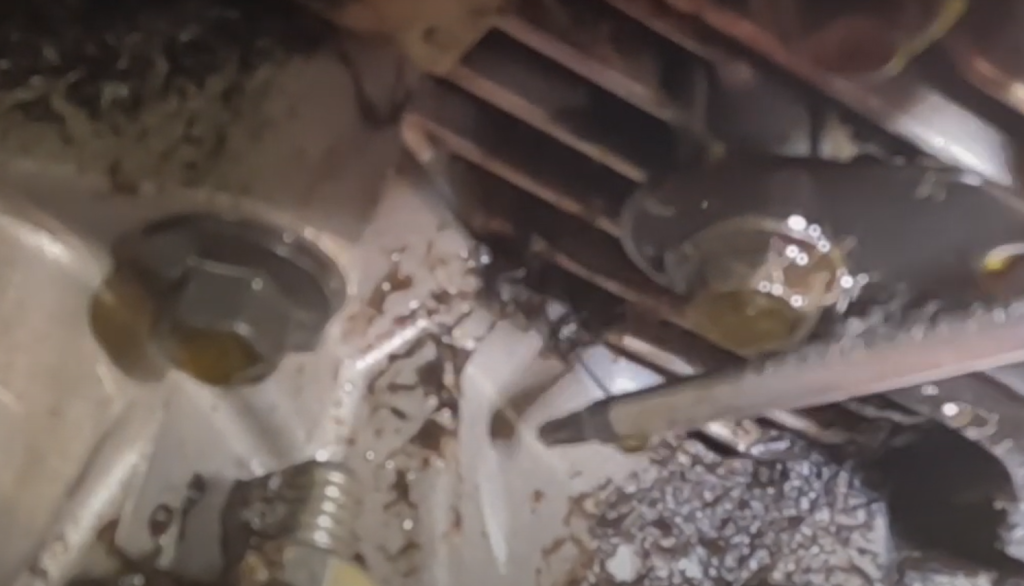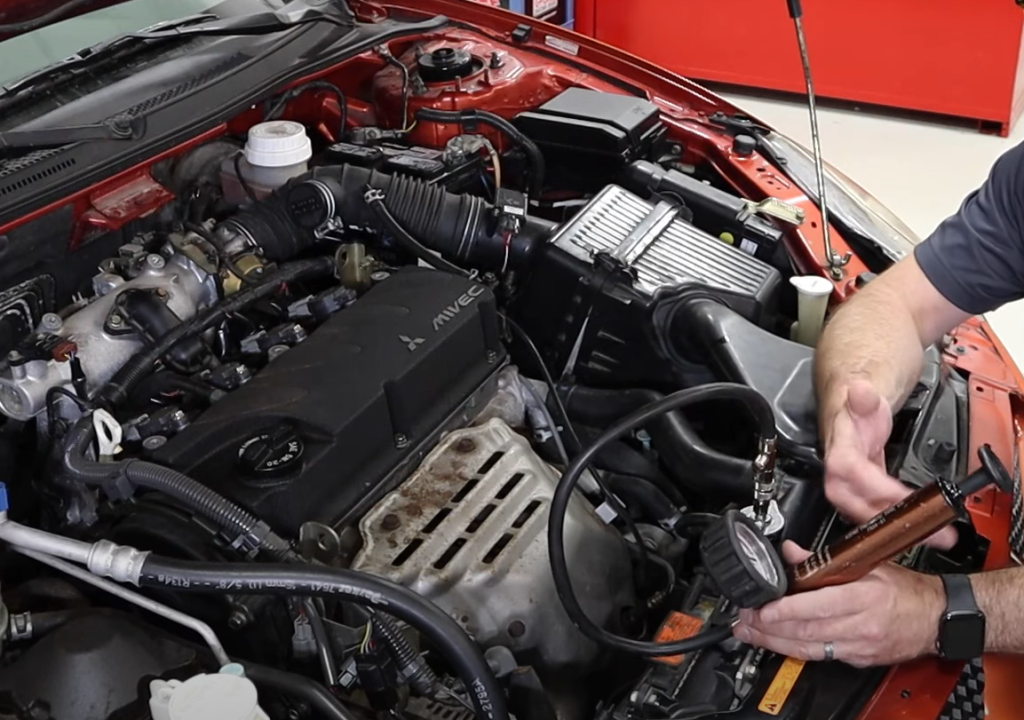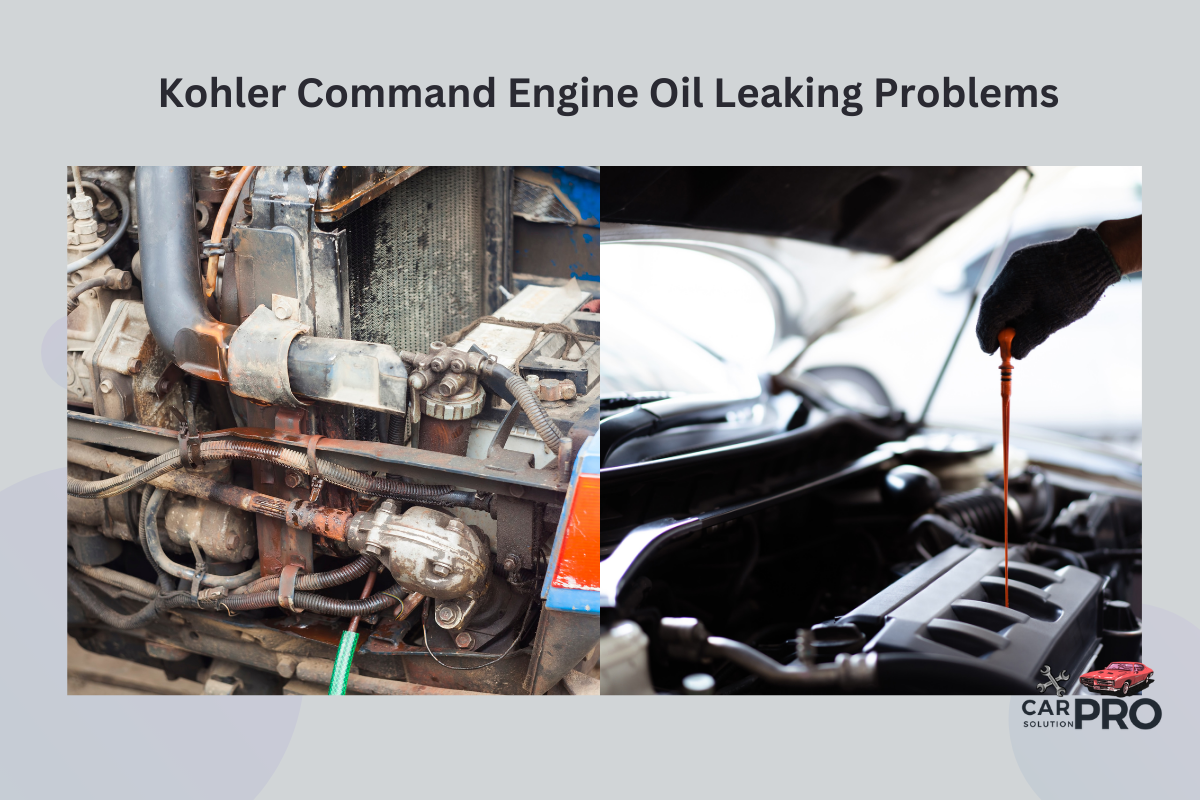Kohler Command engines are known for their reliability, but they can face oil leaking issues. These problems can range from minor annoyances to serious engine damage if left unchecked. Oil leaks in Kohler Command engines are often caused by worn gaskets, loose bolts, or cracks in the engine casing.
Identifying the source of an oil leak is crucial for effective repairs. Common signs include oil puddles under the engine, smoky exhaust, and decreased oil levels. Kohler Command engine oil leaking problems can be fixed by replacing faulty parts, tightening fasteners, or addressing issues with seals and gaskets.
Regular maintenance and prompt attention to leaks can prevent more serious engine damage. By understanding the causes and solutions for oil leaks, Kohler Command engine owners can keep their equipment running smoothly and avoid costly repairs.
Key Takeaways
- Oil leaks in Kohler Command engines often stem from worn parts or loose connections
- Proper diagnosis is essential for effective repair of oil leaking issues
- Regular maintenance helps prevent oil leaks and extends engine life
Understanding Kohler Command Engine Oil Systems
Kohler Command engines use a pressurized oil system to lubricate and cool engine parts. This system has several key components that work together to keep the engine running smoothly.
Components and Function
The oil system in a Kohler Command engine includes an oil pan, pump, filter, and various passages. The oil pan stores the engine oil. The pump circulates oil through the engine.
Oil flows through drilled passages in the engine block and crankshaft. These passages deliver oil to moving parts like the crankshaft bearings, camshaft, and valve train.
A oil filter removes contaminants from the oil as it circulates. This helps protect engine components from wear and damage.
The oil also helps cool the engine by absorbing heat as it flows through. It then releases this heat in the oil pan.
Common Oil Circuitry Issues
Oil leaks are a frequent problem in Kohler Command engines. These can occur at various points in the system. Common leak spots include gaskets, seals, and the oil pan.
A blocked breather can cause pressure buildup in the crankcase. This may force oil past seals and gaskets, leading to leaks.
Worn valve cover gaskets often allow oil to seep out. Cracked oil pans or loose drain plugs can also cause leaks.
Internal issues like a blown head gasket or worn piston rings can let oil enter the combustion chamber. This results in blue exhaust smoke and increased oil consumption.
Regular maintenance and prompt repair of leaks help keep the oil system functioning properly.
Diagnostic Procedures for Oil Leaks

Finding the source of an oil leak in a Kohler Command engine requires careful inspection and testing. These methods help pinpoint the exact location and cause of leaks.
Visual Inspection Techniques
Start by cleaning the engine thoroughly. This makes fresh oil leaks easier to spot. Use a bright light to examine the entire engine block, paying close attention to seams and joints.
Look for oil stains or wet spots, especially around gaskets and seals. Check the oil filter, sump, and cooler lines for any signs of leakage.
Inspect the crankcase breather system. A clogged breather can cause pressure buildup and oil leaks. Check for oil residue around the dipstick tube and valve cover gaskets.
Use UV dye in the oil and a blacklight to reveal hard-to-see leaks. This method can highlight even small leaks that might be missed during a visual inspection.
Seal and Gasket Examination
Focus on common leak points like the crankshaft seal, valve cover gaskets, and oil pan gasket. Look for signs of wear, hardening, or damage.
Check the condition of the head gasket. A blown head gasket can allow oil to leak into the combustion chamber or coolant passages.
Examine the timing cover seal and camshaft seals for any signs of oil seepage. These areas are often overlooked but can be sources of persistent leaks.
Inspect the oil drain plug and ensure it’s properly tightened. A loose or damaged drain plug can cause significant oil loss.
Pressure Testing for Leaks

Use a crankcase pressure tester to check for excessive pressure. High pressure can force oil past seals and gaskets.
Perform a cylinder leak-down test to check for internal leaks. This test can reveal problems with piston rings or valves that might be causing oil consumption.
Check the PCV (Positive Crankcase Ventilation) system. A faulty PCV valve can lead to pressure buildup and oil leaks.
Use compressed air to pressurize the crankcase slightly. Listen for escaping air and look for bubbles in suspected leak areas. This can reveal even small leaks that are hard to spot visually.
Frequent Causes of Oil Leaks
Oil leaks in Kohler Command engines can stem from several common issues. These problems often develop over time due to wear and tear or improper maintenance.
Worn Seals and Gaskets
Crankshaft seals are a frequent culprit of oil leaks. These seals can deteriorate, allowing oil to escape. The area around the fan and flywheel is especially prone to leaks when seals fail.
Oil pan gaskets can also wear out. When this happens, oil may seep from the bottom of the engine. Regular inspections can help catch these issues early.
Valve cover gaskets are another weak point. As they age, they can become brittle and crack. This leads to oil leaking from the top of the engine.
Overfilled Oil Chamber
Adding too much oil to the engine is a common mistake. It puts extra pressure on seals and gaskets. This increased pressure can force oil past these barriers.
Overfilling can also cause oil to leak from the air filter. The excess oil may be pushed into the air intake system. This not only causes leaks but can damage the engine.
To avoid this, always check the dipstick after adding oil. Make sure the oil level is within the recommended range.
Cracked Engine Components
Engine blocks or cylinder heads can develop cracks. These cracks often result from overheating or physical damage. They allow oil to escape from internal passages.
The oil passage between the oil pan and engine block is a potential leak point. If this steel barrel-like component is installed incorrectly, it can cause leaks.
Cracks in the engine casing are serious. They require immediate attention to prevent major engine damage. Regular maintenance and avoiding engine overheating can help prevent these issues.
Repair Solutions
Fixing Kohler Command engine oil leaks requires targeted solutions. The right approach depends on the specific cause and location of the leak.
Replacing Faulty Seals and Gaskets
Broken crankshaft seals often cause oil leaks in Kohler engines. To replace a faulty seal, remove the flywheel and old seal. Clean the area thoroughly before installing the new seal.
Valve cover gaskets can also fail over time. Replace these by removing the valve cover, scraping off the old gasket, and fitting a new one. Ensure proper tightening to prevent future leaks.
Oil pan gaskets may deteriorate, leading to leaks. To fix this, drain the oil, remove the oil pan, and install a new gasket. Use a torque wrench to tighten bolts evenly.
Addressing Overfill Issues
Overfilling the engine oil can cause leaks and damage. Check the dipstick regularly to maintain proper oil levels.
If overfilled, drain excess oil using the drain plug. Be careful not to remove too much. Refill to the correct level on the dipstick.
Consider using a funnel with measurement markers when adding oil. This helps prevent accidental overfilling.
Positive crankcase pressure can force oil out. Ensure the breather system is functioning correctly to maintain proper pressure.
Welding and Replacing Engine Parts
Cracks in the engine block or cylinder head can cause oil leaks. Small cracks may be weldable by a professional. Larger cracks often require part replacement.
For welding, the engine must be completely disassembled and cleaned. A skilled welder can repair hairline cracks in aluminum parts.
If welding isn’t possible, replacing the damaged part is necessary. This might include the engine block, cylinder head, or oil pan.
Always use OEM or high-quality aftermarket parts for replacements. Proper installation is crucial to prevent future leaks.
Maintenance Best Practices
Taking care of your Kohler Command engine can prevent oil leaks and extend its lifespan. Regular checks and using quality products are key to keeping your engine in top shape.
Regular Oil Check and Change Schedule
Check your engine oil level weekly. This simple task can catch leaks early. Change the oil every 50 hours of use or annually, whichever comes first.
Use the right amount of oil. Too much can cause leaks. Follow the manual for the correct oil capacity.
Clean around the oil fill cap before opening. This stops dirt from getting into the engine.
Replace the oil filter with each oil change. A clogged filter can cause pressure buildup and leaks.
Inspect gaskets and seals during oil changes. Replace any that look worn or damaged.
Using High-Quality Engine Oil and Parts
Choose the right oil for your engine. Kohler Command engines usually need SAE 10W-30 oil. Check your manual to be sure.
Use only high-quality engine oil. Cheap oil can break down faster, leading to leaks.
Pick original Kohler parts or trusted aftermarket options. Low-quality parts may not fit well, causing leaks.
Replace gaskets and seals with new ones when doing repairs. Reusing old gaskets often leads to leaks.
Check and replace the breather assembly if needed. A blocked breather can cause oil to leak from seals.
Frequently Asked Questions
Oil leaks in Kohler Command engines can be frustrating, but understanding the causes and solutions can help resolve issues quickly. Let’s address some common questions about these problems.
What are the common symptoms of an oil leak in a Kohler Command engine?
Common signs include oil spots under the engine, smoke from the engine area, and a burning smell. You may also notice decreased oil levels or poor engine performance.
How can you diagnose the source of an oil leak in a Kohler engine?
To find the leak source, clean the engine thoroughly and run it for a short time. Look for fresh oil spots or drips. Use a flashlight to inspect seals, gaskets, and connections closely.
What could cause a 20 hp Kohler engine to leak oil while running?
A 20 hp Kohler engine might leak oil while running due to worn valve cover gaskets, a damaged crankshaft seal, or a cracked oil pan. Pressure buildup during operation can worsen existing leaks.
Why might a Kohler engine leak oil from the bottom?
Oil leaks from the bottom often point to issues with the oil pan gasket or crankshaft seals. A cracked oil pan or loose drain plug can also cause bottom leaks.
How do you fix a sump gasket leak on a Kohler Command engine?
To fix a sump gasket leak, drain the oil, remove the oil pan, and clean the mating surfaces. Install a new gasket and reassemble carefully. Tighten bolts evenly to the correct torque specifications.
What are potential reasons for a Kohler engine to leak oil from the exhaust?
Oil leaking from the exhaust may indicate worn piston rings or valve guides. This allows oil to enter the combustion chamber and exit through the exhaust system. Internal engine wear or damage can cause this issue.


